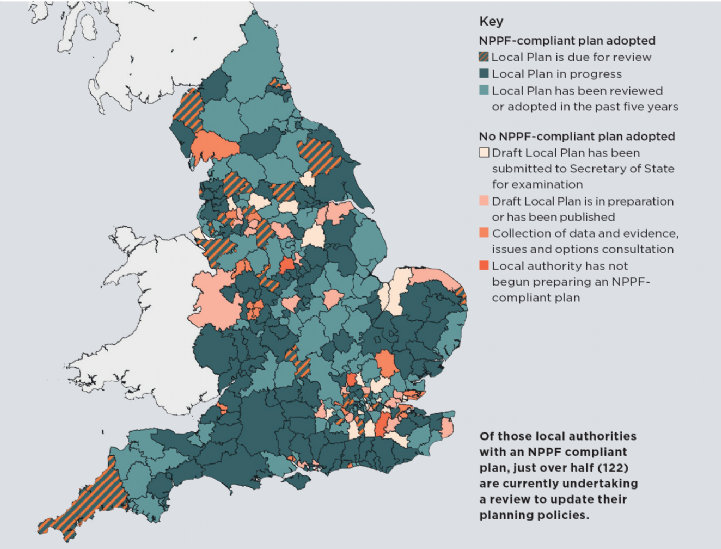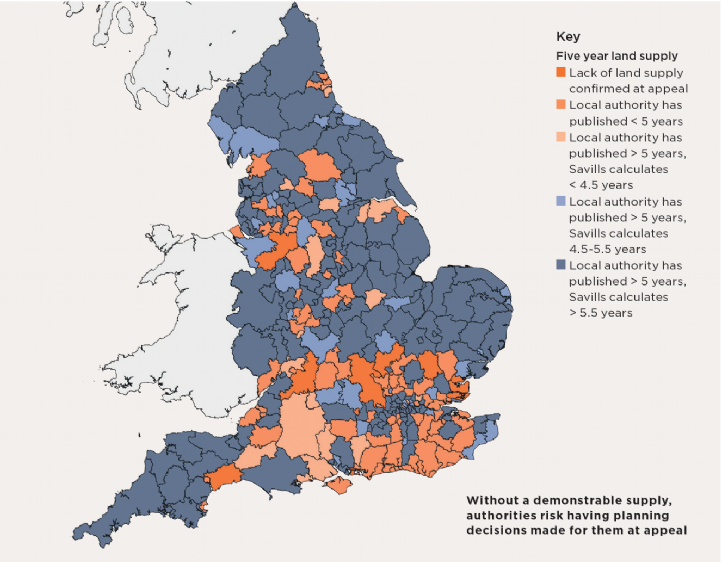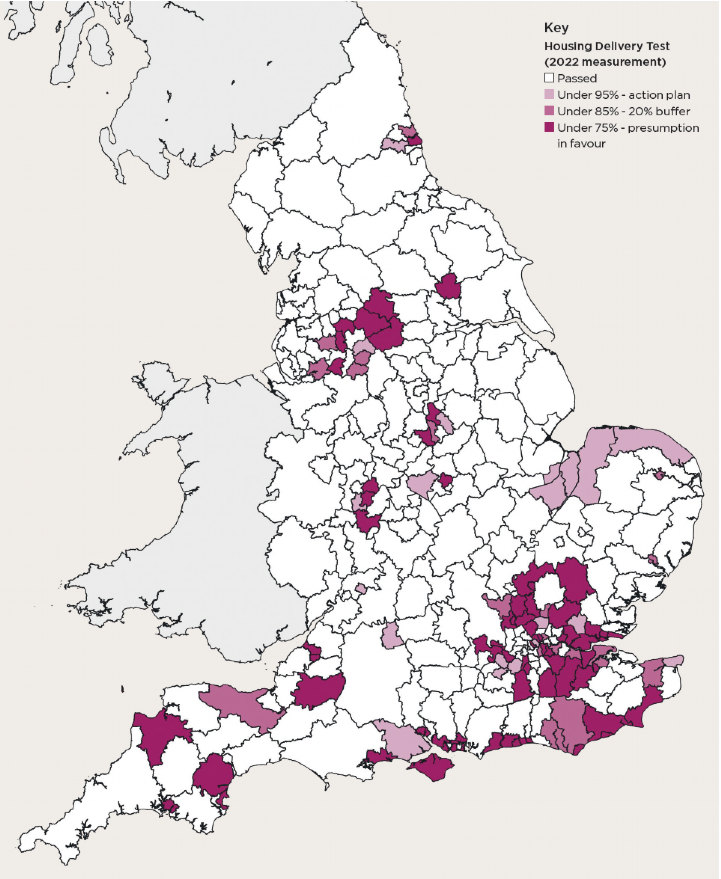Removing 5YHLS
At present, all local planning authorities in England are required to prove that they have a rolling five-year supply of deliverable land for housing, to ensure there is always sufficient land allocated to meet their housing need. Failure to do so can result in developers being able to bring forward sites outside the local plan process.
But the Government has recently proposed removing this requirement if LPAs have an “up-to-date” plan – that is, one adopted or reviewed less than five years ago. They claim this will incentivise timely adoption of local plans, by concurrently removing the threat of a ‘tilted balance’ towards sustainable development where local authorities have an up-to-date plan but questionable land supply.
There’s something to be said for this argument: local plans already have to identify five years’ worth of supply in order to be adopted, and plans are required to be replaced after that period. The government has also previously claimed that the change would limit the ability of developers to engage in legal gamesmanship against local authorities with borderline supply figures, where the former try to gain planning consents by proving a local authority has fallen just short of the five year mark. Finally, it may reduce the workload on over-stretched local planning officers, allowing them more time to consider applications and regularly review their local plans.
But this argument only holds if adopting a plan does, in fact, go hand-in-hand with a solid supply of housing land. Unfortunately, the data does not bear this out. Of the 95 LPAs that have adopted a local plan in the last five years and are not currently reviewing their planning policies, over a third (36%) were unable to prove five years’ worth of housing land as of December 2022, and 23% are expected to fall short of their housing targets in the 2023 Housing Delivery Test.
The likely effect of removing the requirement, therefore, may be more LPAs with up-to-date local plans, but fewer with a solid supply of housing land, and lower overall housing delivery in England.



